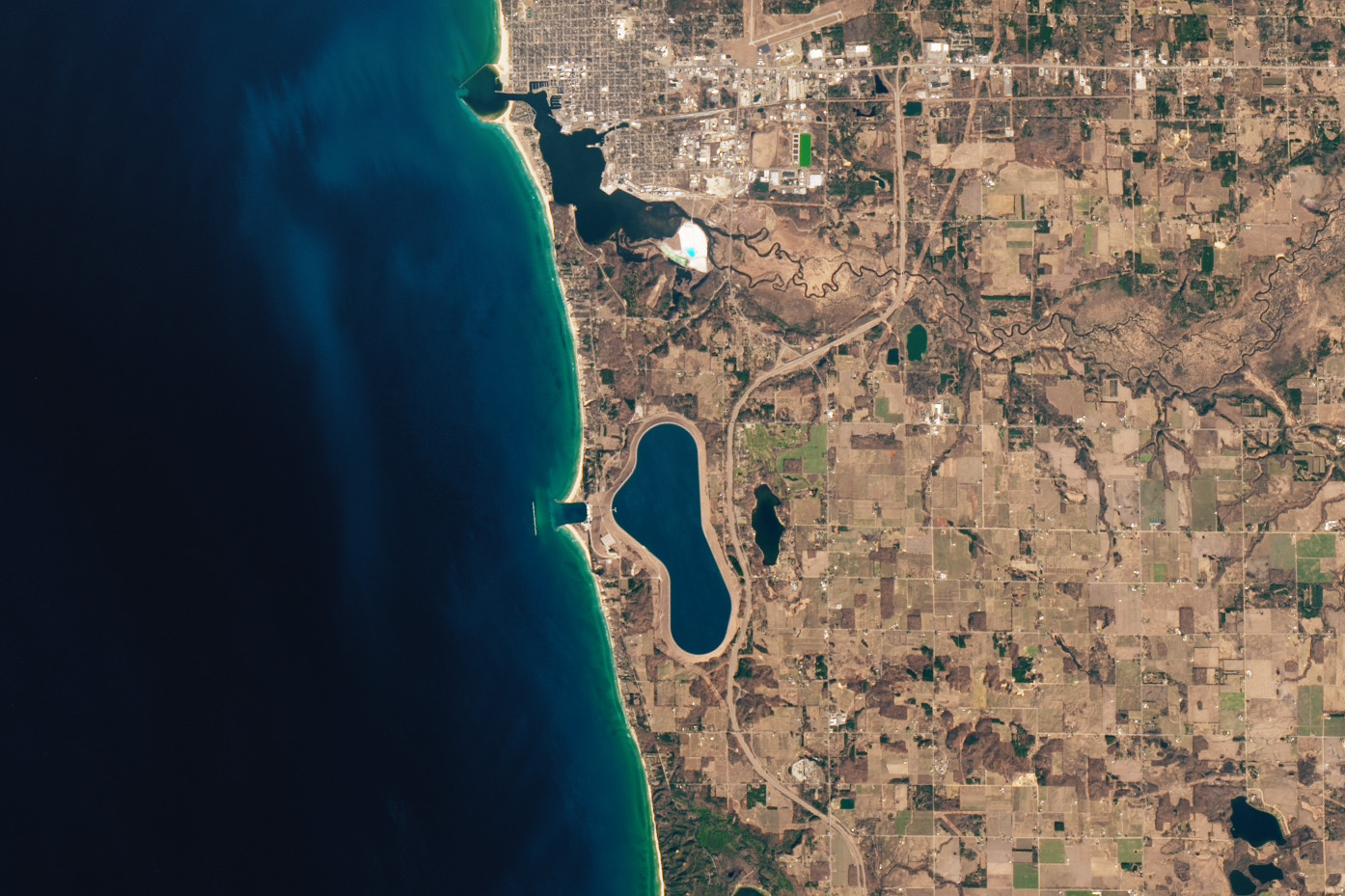Air quality alert for Upper Peninsula Friday – MLive.com

Report on Air Quality Advisory in Michigan and its Implications for Sustainable Development Goals (SDGs)
Executive Summary
An Air Quality Advisory was issued for Michigan’s Upper Peninsula due to elevated levels of fine particulate matter (PM2.5) originating from Canadian wildfires. This environmental health event directly impacts the region’s progress toward several key United Nations Sustainable Development Goals (SDGs), particularly those concerning public health, sustainable communities, and climate action. The advisory highlights the vulnerability of communities to transboundary pollution and underscores the interconnectedness of environmental stability and human well-being.
Incident Details
- Issuing Authorities: National Weather Service and the Michigan Department of Environment, Great Lakes, and Energy (EGLE).
- Effective Period: Thursday, 12:09 p.m. EDT to Friday, 12:15 p.m. EDT.
- Affected Region: The advisory covers the counties of Keweenaw, Ontonagon, Houghton, Baraga, Marquette, Alger, Luce, Gogebic, Iron, Dickinson, Menominee, Delta, and Schoolcraft.
- Pollutant of Concern: Fine Particulates (PM2.5) from wildfire smoke.
- Severity Level: Pollutant levels are expected to be in the “Unhealthy for Sensitive Groups” (USG, Orange AQI) range, with the potential for short-term spikes into the “Unhealthy” (Red AQI) range.
Alignment with Sustainable Development Goals (SDGs)
SDG 3: Good Health and Well-being
- This advisory is a direct response to a threat against Target 3.9, which aims to substantially reduce illnesses and deaths from air pollution.
- The presence of PM2.5 poses significant health risks, including respiratory and cardiovascular complications, directly challenging the goal of ensuring healthy lives for all.
- Health recommendations issued by authorities are critical measures to safeguard community well-being and mitigate immediate health impacts, especially for vulnerable populations.
SDG 11: Sustainable Cities and Communities
- The air quality degradation directly impacts Target 11.6, which calls for reducing the adverse per capita environmental impact of cities, including a focus on air quality.
- The event renders community environments temporarily unsafe and less inclusive, forcing residents to alter daily activities and limit outdoor exposure, thereby affecting the overall sustainability and quality of life.
SDG 13: Climate Action
- The incident, caused by smoke from large-scale wildfires often exacerbated by climate change, highlights the urgent need for comprehensive climate action as outlined in SDG 13.
- The transboundary nature of the smoke demonstrates that climate-related impacts do not respect national borders, reinforcing the need for international cooperation to strengthen resilience and adaptive capacity to climate-related hazards.
Official Public Health and Mitigation Directives
To protect public health and support community resilience in line with SDG principles, the following actions were recommended by the weather service:
- Limit Exposure: Avoid strenuous outdoor activities, especially for individuals with heart disease, asthma, and other respiratory conditions.
- Monitor Health: Be vigilant for symptoms such as wheezing, coughing, chest tightness, dizziness, or burning sensations in the nose, throat, and eyes.
- Reduce Local Pollution: Reduce or eliminate activities that contribute to air pollution, such as outdoor burning and the use of residential wood-burning devices.
- Secure Indoor Air Quality: Keep windows closed to prevent smoke from entering buildings and, if possible, operate central air conditioning systems with high-efficiency MERV-13 or higher rated filters.
Analysis of Sustainable Development Goals (SDGs) in the Article
1. Which SDGs are addressed or connected to the issues highlighted in the article?
The article on the air quality alert in Michigan due to Canadian wildfire smoke connects to several Sustainable Development Goals (SDGs). The primary connections are to health, sustainable communities, climate action, and terrestrial ecosystems.
- SDG 3: Good Health and Well-being: The article’s core message is a public health warning about the dangers of air pollution. It explicitly mentions health risks for sensitive groups, including those with “heart disease and respiratory diseases such as asthma,” and lists symptoms like “wheezing, coughing, chest tightness,” which directly relates to ensuring healthy lives.
- SDG 11: Sustainable Cities and Communities: The alert affects numerous counties, which are human settlements. The goal of making cities and settlements inclusive, safe, resilient, and sustainable includes managing environmental quality, particularly air quality. The article highlights a failure in maintaining safe air quality for the communities mentioned.
- SDG 13: Climate Action: While not explicitly stated, large-scale wildfires, such as the Canadian wildfires mentioned as the source of the smoke, are widely recognized as being exacerbated by climate change. The transboundary nature of the smoke demonstrates the far-reaching impacts of climate-related hazards, necessitating urgent action to combat climate change and its impacts.
- SDG 15: Life on Land: The source of the air pollution is “Canadian wildfires.” Wildfires are a significant threat to forests and terrestrial ecosystems, leading to deforestation, land degradation, and loss of biodiversity. This SDG aims to protect, restore, and promote the sustainable use of such ecosystems.
2. What specific targets under those SDGs can be identified based on the article’s content?
Based on the issues discussed, the following specific SDG targets are relevant:
- Target 3.9: “By 2030, substantially reduce the number of deaths and illnesses from hazardous chemicals and air, water and soil pollution and contamination.” The article directly addresses this target by focusing on the health risks and potential illnesses caused by “elevated levels of fine particulates (PM2.5)” in the air. The advisory is a measure to prevent such illnesses.
- Target 11.6: “By 2030, reduce the adverse per capita environmental impact of cities, including by paying special attention to air quality…” The article is entirely about a negative environmental impact—poor air quality—on the populations of several counties (“cities” in a broader sense of human settlements). The issuance of an “Air Quality Advisory” shows that attention is being paid to this issue.
- Target 13.1: “Strengthen resilience and adaptive capacity to climate-related hazards and natural disasters in all countries.” The wildfire smoke is a climate-related hazard. The response from the National Weather Service and the Michigan Department of Environment, Great Lakes, and Energy (EGLE) by issuing an alert and providing guidance represents an effort to build adaptive capacity and resilience among the affected population.
- Target 15.2: “By 2020, promote the implementation of sustainable management of all types of forests, halt deforestation, restore degraded forests and substantially increase afforestation and reforestation globally.” The wildfires causing the smoke are indicative of a failure to achieve sustainable forest management and prevent the degradation of forests, which is a core component of this target.
3. Are there any indicators mentioned or implied in the article that can be used to measure progress towards the identified targets?
Yes, the article mentions or implies several indicators that are used to measure progress:
- Indicator for Target 3.9 and 11.6: The article explicitly mentions the key pollutant being measured: “fine particulates (PM2.5)”. This is a direct reference to the official SDG indicator 11.6.2, “Annual mean levels of fine particulate matter (e.g. PM2.5 and PM10) in cities.” The article also mentions the “Air Quality Index (AQI)” and its specific levels, such as “Unhealthy for Sensitive Groups (USG, Orange AQI)” and the potential to reach the “Unhealthy (red AQI) range.” These are practical, real-time metrics used to monitor air quality and its health implications.
- Indicator for Target 13.1: The existence and implementation of an early warning system can be seen as an indicator. The article describes such a system in action: an “Air Quality Advisory” issued by government bodies like the “National Weather Service” and “The Michigan Department of Environment, Great Lakes, and Energy (EGLE).” This action serves as a qualitative indicator of a country’s disaster risk reduction strategy, which aligns with indicator 13.1.2 (“Number of countries that have adopted and implemented national disaster risk reduction strategies”).
- Indicator for Target 15.2: The event itself—“Canadian wildfires”—can be considered an indirect indicator. Data on the frequency, scale, and intensity of wildfires are used to measure the health and stability of forest ecosystems. An increase in such events indicates a negative trend in achieving sustainable forest management.
4. Summary Table of SDGs, Targets, and Indicators
| SDGs | Targets | Indicators Identified in the Article |
|---|---|---|
| SDG 3: Good Health and Well-being | 3.9: Substantially reduce illnesses from air pollution. | Levels of fine particulates (PM2.5); Air Quality Index (AQI) levels (Orange, Red); Reported health symptoms (wheezing, coughing, etc.). |
| SDG 11: Sustainable Cities and Communities | 11.6: Reduce the adverse per capita environmental impact of cities, paying special attention to air quality. | Measurement of “elevated levels of fine particulates (PM2.5)” in populated counties. |
| SDG 13: Climate Action | 13.1: Strengthen resilience and adaptive capacity to climate-related hazards. | Issuance of an “Air Quality Advisory” by national and state agencies as an early warning system. |
| SDG 15: Life on Land | 15.2: Promote sustainable management of all types of forests and halt deforestation. | The occurrence of “Canadian wildfires” as an event indicating a lack of sustainable forest management. |
Source: mlive.com

What is Your Reaction?
 Like
0
Like
0
 Dislike
0
Dislike
0
 Love
0
Love
0
 Funny
0
Funny
0
 Angry
0
Angry
0
 Sad
0
Sad
0
 Wow
0
Wow
0












































































